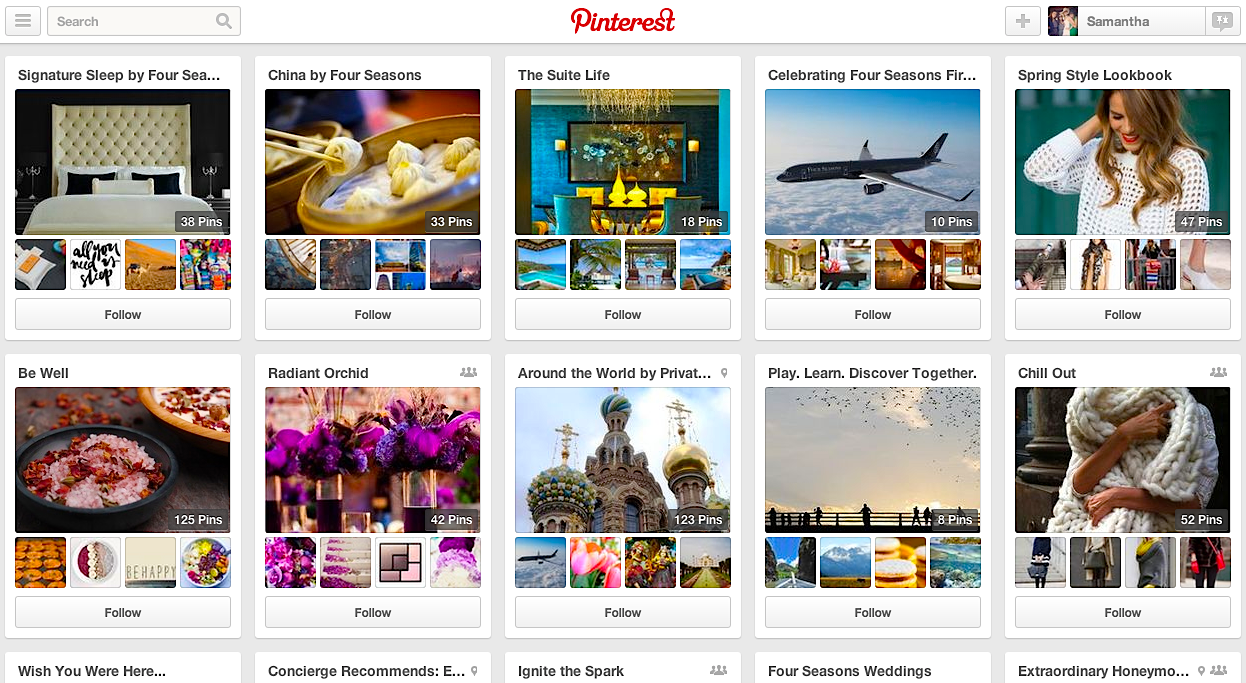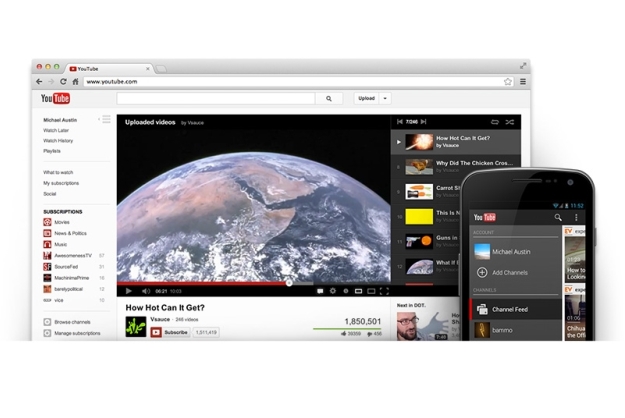A boutique consultancy dedicated to delivering relevant insights that guide clients through complicated decisions and uncover new ways of thinking.

Shari Allison
Principal
Shari has spent the past 20 years helping clients refine the way they look at their marketplace, their customers & their business. Co-founder of Ignite in 2011, Shari focuses on challenging convention, redefining context & delivering clarity to client partners. Although she holds advanced degrees in consumer behaviour, Shari’s expertise extends well beyond research & insights to thought-leadership & true strategic-partnership.

Stephen Tile
Principal
For the past 30 years Steve has been helping some of the biggest brands refine their target, define their messages and build their businesses. He is a consummate strategist who uses an array of research tools to deliver crisp & meaningful insights that inspire and transform.
Ignite is brought to the table when senior level, objective, thought-partners are needed to help provide clarity, focus decision-making & optimize opportunity.
Our business model allows for intimate, hands-on engagements that are flexible & provide meaningful business outcomes.
While Ignite can of course execute basic research, our sweet spot is really those issues that are strategically significant to the organization.
We focus on strategic, high-touch engagements related to…
- Market dynamics
- Brand strategy
- Brand targeting & positioning
- Brand identity
- Innovation
- Concept development
- Concept evaluation/execution
- Communication strategy
- Communication development/evaluation
Specializing in retail, travel, packaged goods, alcohol, technology, financial services & luxury goods segments.
- Ignite employs a creative range of methods to uncover insights…from traditional focus groups & online surveys to inventive interactive, observational & ethnographic approaches.
- Emphasis is on driving insights deep into organizations, either up or down, where they can be actioned — use facilitation & workshopping methods to ensure organizational enculturation.
Coca-Cola Shakes Up Marketing Ranks
Coca-Cola’s star marketer, Wendy Clark, is tackling the company’s North America business. Ms. Clark will take on the role of president-sparkling and strategic marketing, Coca-Cola North America, effective June 1. Meanwhile, Katie Bayne, who had been president-North America Brands and is the former CMO of Coca-Cola North America, will take on the job vacated by Ms. Clark, senior VP-global sparkling brand center. Ms. Bayne will report to Joe Tripodi, chief marketing and commercial officer. Ms. Clark will report to Sandy Douglas, global chief customer officer and president of Coca-Cola North America. Read more about Coca-Cola and how they are shaking up marketing ranks...Weight Watchers Chooses Wieden+Kennedy to Redefined Its Brand Strategy
Weight Watchers International, Inc. (NYSE: WTW) today announced that Wieden+Kennedy has been selected in the U.S. to take the lead in redefining the brand, building the brand strategy and developing creative ideas to be executed across channels. This move consolidates advertising creative development with Wieden+Kennedy. “We have such tremendous potential to combine the strength and trust of the Weight Watchers brand with the powerful and emotional benefit we deliver to our members. We’re completely revamping the way we think about marketing and its role in our business, and we believe Wieden+Kennedy is the right partner to reinvent how we go to market. Wieden+Kennedy continues to set the standard for breakthrough work and we look forward to partnering with them,” said Lesya Lysyj, President, North America, Weight Watchers. Read more about Weight Watchers and their new brand strategy...Four Seasons’ Pinterest Strategy Is Focused on Inspiration, Not Bookings
This corporate practice may have seemed bizarre a decade ago, but social media has quickly become one of the more important communication tools that a brand has as its disposal — especially one as image- and inspiration-driven as Four Seasons. The hotel chain has had exceptional success on Pinterest where, according to Pinterest’s case study on Four Seasons, the hotel brand experienced “a 1,000% increase in daily average visitors and a 1,700% increase in daily average clicks to its website.” Rather than limit itself to property photos or promotions, the brand chose to project a lifestyle including food, fashion and general travel. To do this, Four Seasons’ social media team keeps tabs on luxury travel and trends online and incorporates them into its own pages, explains Elizabeth Pizzinato, senior vice president of marketing and communications at Four Seasons. Find out more about how Four Seasons is improving their Pinterest strategy...Government Nurtures Innovation
Jim Manzi is the founder and chairman of Applied Predictive Technologies, and one of the originators of cloud computing. He is also a well-known libertarian/conservative thinker, a senior fellow at the Manhattan Institute, and a contributing editor to the National Review. Between his tech background and his politics, he’s about the last person you’d expect to praise the historic role government has played in the critical business of innovation — or to call for that role to be stepped up in the here and now. But that’s exactly what Manzi has done in a new and important essay in the spring issue of National Affairs — an essay that is getting widespread attention. Titled “The New American System,” Manzi’s essential point is that American innovation — the key to our prosperity — has always relied, to some extent, on government support. In the early days of the republic, he writes, Alexander Hamilton proposed government help for the developing manufacturing industries — “the high-tech sector of its day.” Hamilton’s basic insight, he adds, was “that the enormous economic value that innovative industries could offer the nation merited public efforts to enable their success.” Read more about how government nurtures innovation...The 7 Innovation Secrets of Steve Jobs
“The cure for Apple AAPL +0.03% is not cost-cutting; the cure for Apple is to innovate its way out of its current predicament.” Steve Jobs made that bold statement when he returned to Apple after a 12-year absence. Apple was close to bankruptcy. We all know what happened next. Steve Jobs launched one innovation after another after another, revolutionizing computers, entertainment, music, retail, mobile, and telecommunications. It’s no wonder that CNBC named Steve Jobs the #1 most innovative and transformative business leader of the past 25 years. Read more about these innovation secrets of Steve Jobs...Innovation: A Gadget That Scrambles The Egg Inside The Shell
If this egg scrambling tool works as promised, your egg can come out of its shell with the yolk and egg already mixed. You could hard or soft boil, fry, scramble or devil them into what creator Geraint Krumpe calls “golden eggs,” named for the eggs’ creamy, soft yellow color when they come out. “I was laid off from a company I worked for for 11 years,” Krumpe says, when asked how this all started. “So I had to get creative.” Krumpe started a product design company and sometime last Easter, he was surfing YouTube videos and found inspiration. “I found a video with a science guy spinning an egg inside a shirtsleeve. So I said, I have to try this. I stayed up late and broke a bunch of eggs trying to get one to work,” he says. You can read more about this delicious innovation idea for scrambling eggs inside the shell...Innovation Holds the Key to Driver Safety
Even after almost 10 years of unveiling the latest consumer technology at the International CES, innovation and the ways it keeps us connected — no matter where we are — continues to amaze me. But innovation can also produce what economists refer to as negative externalities: an incessant urge to stay connected, even while we’re driving. And that connection can come at the expense of safety — for us, our families riding in our cars, the strangers with whom we’re sharing the road and everyone who’s hoofing it along sidewalks and crosswalks. The legacy of technology in the vehicle is one driven by safety. From John Hetrick’s invention of the automotive airbag, to Saab’s decision in 1968 to make safety belts standard, to Richard Kearn’s invention of the intermittent windshield wiper. The long list of vehicle innovation has contributed significantly to safer driving. Early figures suggest the number of traffic fatalities fell in 2013 to the lowest level in 64 years. In more ways, consumer technology we bring into the vehicle also contributes to safer driving, from navigation systems to Bluetooth hands-free capabilities. But where should we draw the line in deciding which technologies truly make driving safer and which can potentially put us at greater risk on the road? Read more about how innovation holds the key to driver safety...How To Lead A Culture Of Innovation
Leading an innovation culture can be a messy business. Or, maybe that should be: Leading an innovation business can be a messy culture. However the notion is phrased, the point is the same. Innovation is not a tidy process. By its very nature, innovation is unpredictable, even though your business requires predictability. It is full of surprises, even when you believe your biggest enemy is surprise. And, frequently, innovation delivers more failure than success, even when your future (both your organization’s and yours as an individual!) demands a track record of success. Innovation is intrinsically a contradiction, offering significant improvement to your business, just as it offers up disruption and change. It can dramatically enhance your competitive advantage, while at the same time putting your existing market advantage at risk. It can create sustainable growth, while at the same time threatening known, existing growth elements. It seems axiomatic that positioning innovation as a core value or business model is a high-reward, high-risk proposition. And that means that creating an innovation culture may very well require a different approach to leadership, a different way of thinking about yourself, and a different way of being mindful of your own development as a leader. Read more about leading an innovation culture...12 Ways to Improve Your Company Branding Strategy Using LinkedIn
Developing a strong company brand is one of the keys which determines how well you’re able to recruit and retain key talent in any market. Asian employees often view LinkedIn as the most professional social media outlet which makes it one of the best avenues to establish your corporate presence. There are 4 companies which seem to be doing company branding just right and I’ve compiled a list of 12 lessons to learn and implement from them. Tata Steel A steel making company is not the first company that comes to mind when you think about interesting social platform branding but Tata Steel sure does it right. Key takeaways from their page include: Upload a catchy cover image: The one they use simply makes their page interesting. Encourage Employees to Join Social Platforms: Tata Steel has nearly 12,500 on LinkedIn alone. Update your Company Page Regularly: They update theirs nearly every day and it’s all pretty interesting stuff! Learn more tips on how you can improve your company branding strategy using LinkedIn by observing other examples...YouTube Ad School Teaches Brand How to Execute the Perfect Content Strategy
Last March, YouTube recently held its second Brand Partner Program, which was attended by major brands like Ford, AT&T, Samsung and Visa. The three-day boot camp was held at the YouTube Creative Space in Los Angeles, and was organized to “treat advertisers like content creators,” according to Jamie Byrne, Director of Content Strategy at YouTube and overseer of the program. The Brand Partner Program aims to help brands execute and improve their strategies when it comes to creating video content that end up on their YouTube pages. Read more about this YouTube ad school and how it teaches brands to execute the perfect content strategy...Marketing Experts Highlight Brand Lessons in ‘Heartbleed’ Security Flaw
Branding experts say the decision by security researchers to give the Heartbleed technology security vulnerability a visual brand identity was a clever way of raising its profile globally, and compare its effectiveness to the Y2K millennial bug. The severe CVE-2014-0160 flaw, which effects software used to secure communications on millions of websites worldwide, was discovered by the security research team at Codenomicon on 3 April. Just days later, the team christened the bug ‘Heartbleed’, designed a logo, and created a dedicated website explaining the seriousness of the issue in general terms, as well as how organisations can deal with it. Read more about the brand lessons learned from the ‘Heartbleed’ security flaw...7 Tips to Ensure Your SEO Strategy Supports Your Brand
SEO isn’t just about ranking for keywords. Many people fall into a keyword obsession rut and seem to forget that while keywords are important, SEO at its core is about indexation, crawlability, and creating a site that is effectively traversed by crawling search bots. Many people also often forget how, when done effectively, SEO supports their brand. How your brand is displayed in search, as well as the many other online properties where you have a presence, is commonly forgotten in the race toward powerful rankings for desired non-branded keywords. Don’t get me wrong, I love to see non-branded organic visibility rise, but we can’t forget “The Brand.” In order to give the brand its fair share of SEO attention, here are seven areas you should focus that will give some love to your company. Read all of the 7 tips to ensure your SEO strategy supports your brand...Ignite Lab Inc.
40 Eglinton Ave. East
Suite 703
Toronto, ON
M4P 3A2












